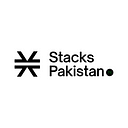A World with Blockchain
The world is neck-deep into the astonishing milestones that have been achieved by Web 2.0. From the flamboyance of websites to the interactivity of attention-centered social media platforms, the second era of the global network has taken the general public by storm. And a big part of responsibility falls on the shortcomings of Web 1.0. Considering the websites made on the latter, some millennials may find them quite bland. The shift has been rather swift, but very quickly has the world forgotten where this journey of connectivity began. The truth is that platforms like Facebook and Instagram have given the users so much to take in, that it has tarnished the existence of MSN chat rooms in the minds of netizens.
The world has been rather overtaken by the sophisticated approach of these tech giants, and the sole reason being their mindsets to continuously dominate the market by using the users’ data against themselves. While, these platforms earn billions off of their customers’ usage, they are still treating their users like tools. The depth of their approach has normalized this culture of attention-centered approach. Whereby, the subjects (being the users) are taught that by putting themselves on the forefront, they are doing the internet some service. But in reality, they are training the AI tools to gather more and more data points on their personal life.
As computer scientist and a professor emeritus of computer science, political science and statistics at Yale university, Edward Tufte points out: “There are only two industries that call their customers ‘users’; illegal drugs and software”. The observations of Ed might sound too anti-computers to most people, but the idea of user-safety is a clear message from the IT veteran.
So how does this all connect to Web 3.0? Or does it even connect at all? The answer is a big yes. With the introduction of Web 2.0 to add colors into the Web 1.0 picture, the third generation of internet will fill the gaps left behind by its predecessor. The key variables of Web 3.0 shall be user data-safety, interoperability and stronger connectivity.
With users able to keep their information safe and share it with parties only upon need, the ultimate destination shall be the exchange between the interacting entities, not the servers of some billion-dollar corporation.
Blockchain being the crown jewel, shall bring more momentum to the transition, by bringing money on board. The adoption of Blockchain has a number of solid arguments on its side. By introducing a “global currency”, companies like Bitcoin and Ethereum, the new approach will eliminate the binding imposed upon the users by national and state banks. Obviously, this shall be opposed by many state-level institutions and governments.
But one thing that history has made clear, is that revolutions are not dependent upon nationalities or the will of a few enjoying their 15 minutes of power.
With the idea of a decentralized economic system, humanity moves one step closer to the “global village”. If we are to witness the world that keeps everyone connected and online all the time, the world must have pretty solid reasons to do so. And to adopt a decentralized currency, the reasons in favor of this new mindset should be dominant on the thoughts of the past.
A world with blockchain shall bring numerous opportunities for those looking to come forward with their work and making it a part of the new environment. The world shall see that practical aspect of “always connected”. And most importantly, the adoption of a new era will bring about a different level of connectivity as 5G networks will be powering the next generation of internet. Combining the speed of 5G networks with the thought of user data safety and interoperability between AI and humans, then, adding the freedom brought about by Blockchain; this is the dream that we sail towards.
Written By: Humza Noor
